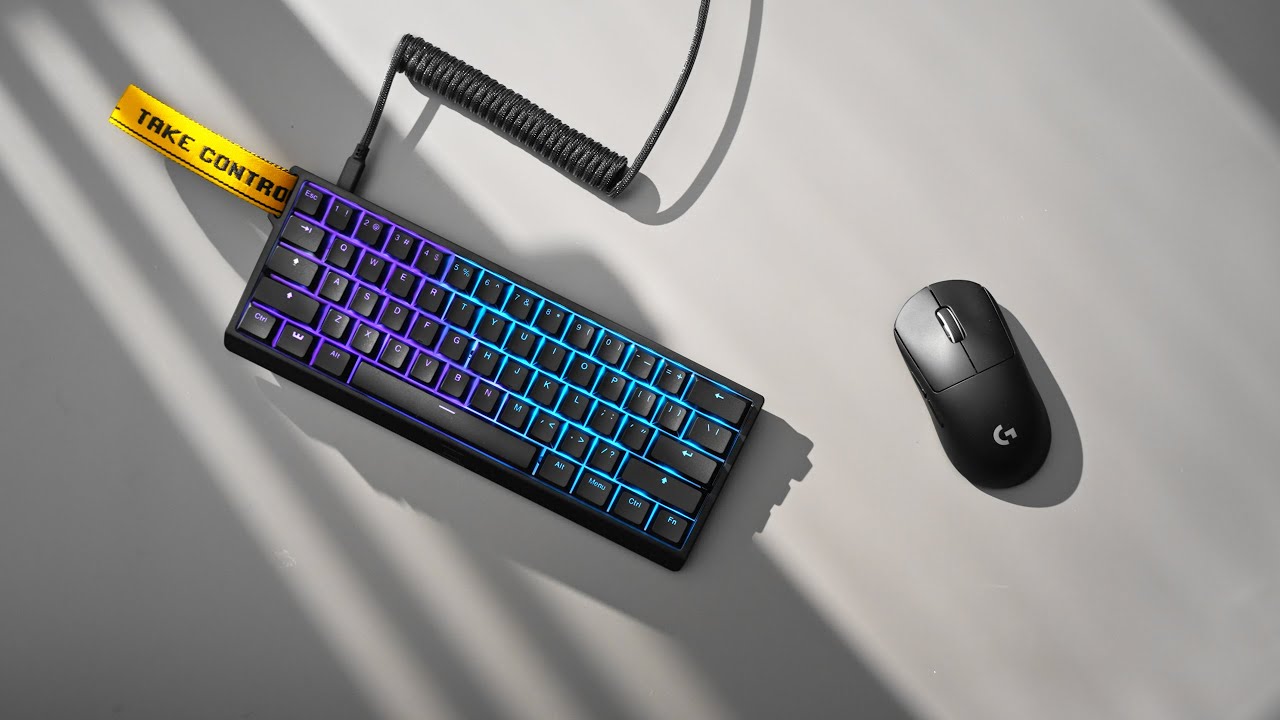
Forming professional networks, job hunting, and even headhunting has now become more convenient in the digital age. Through LinkedIn, people from all over the world can connect with each other in a more professional setting. Whether you’re new to the workforce, a corporate senior, or a brand marketer, these LinkedIn facts will come in handy.
- LinkedIn has over 546 million users in at least 200 countries and territories worldwide.
- About 43% of LinkedIn users are women, while 57% are men.
- 30 million companies from all over the world are on LinkedIn.
- At least 39% of users pay for LinkedIn Premium.
- The median number of LinkedIn connections is between 500 and 999.
- Founded in 2002, LinkedIn is a business-oriented social networking site.
- The LinkedIn headquarters is located in Mountain View, California.
- Senior Software Engineers at LinkedIn make the most with an average annual salary of $155,705.
- Relationship Managers at LinkedIn make the least with an average annual salary of $81,969.
- LinkedIn has a 28% lower cost per lead than Google AdWords.
- Users only spend an average of 17 minutes on LinkedIn per month.
- At least one upper-level representative represents each Fortune 500 company on LinkedIn.
- 90% of recruiters use LinkedIn on a regular basis.
- Employees sourced through LinkedIn are 40% less likely to leave within the first 6 months.
- The best time to post on LinkedIn is every Thursday.
- LinkedIn reigns as the world’s largest professional network.
- It ranks among the top social networks for lead generation as well.
- LinkedIn operates in 24 languages.
- A LinkedIn ad can reach 12% of the world’s population over the age of 13.
- More than 20,000 companies in the U.S. use LinkedIn to recruit.
LinkedIn Facts Infographics

Five people started LinkedIn when they launched the platform in 2003.
Before its status as the go-to social network for professionals, LinkedIn had a long way to go. In 2002, venture capitalist Reid Hoffman launched the initiative for LinkedIn, employing names from Paypal and Socialnet.com as its founding team.
At the time, the team comprised of Allen Blue (product designer), Konstantin Guericke (marketing professional), (venture capitalist), Eric Ly (engineer), and Jean-Luc Valliant (engineer).
LinkedIn emphasizes the professional connections of a user.
This edge sets the platform apart from other social networking sites. For instance, Facebook and MySpace are more recreational sites.
A LinkedIn profile has a similar structure to that of a résumé.
Users create these pages where they can list their education and employment history and showcase particular skills.
LinkedIn connections start from invitations.
A user can accept a connection invite from another user, and vice versa. Aside from finding connections, LinkedIn also allows users to advance their careers by searching for jobs and receiving recommendations from other users.
In 2005, LinkedIn addressed its slow growth by introducing professional services.
The said services included allowing companies to post job listings and search the network for prospective employees. Aside from that, LinkedIn also allowed companies to advertise on the platform.
LinkedIn did not become profitable until 2007.
In its early days, the platform only had over 15 million members. In 2011, LinkedIn garnered at least 100 million members, raising an IPO of $353 million.
Microsoft has owned LinkedIn since 2016.
In 2016, the technology giant Microsoft acquired the social network site for approximately $26 billion. By the following year, LinkedIn reported having over 500 million members hailing from around 200 countries.
The LinkedIn logo features a mixed up-to-date look and a web 2.0 impression.
Composed of the words “Linked” and “In,” the font for the LinkedIn logo has a barely noticeable spacing in between. “Linked” comes in black, while “In” is in white and placed in a blue square shape with rounded angles.
There are instances where the LinkedIn logo is reduced to just the “In,” and “Linked” is omitted.
When there’s not enough space, LinkedIn’s logo may be officially shortened to the “In” of its namesake. One example was when it was applied for the LinkedIn-branded chocolates which came in squares that featured the logo.
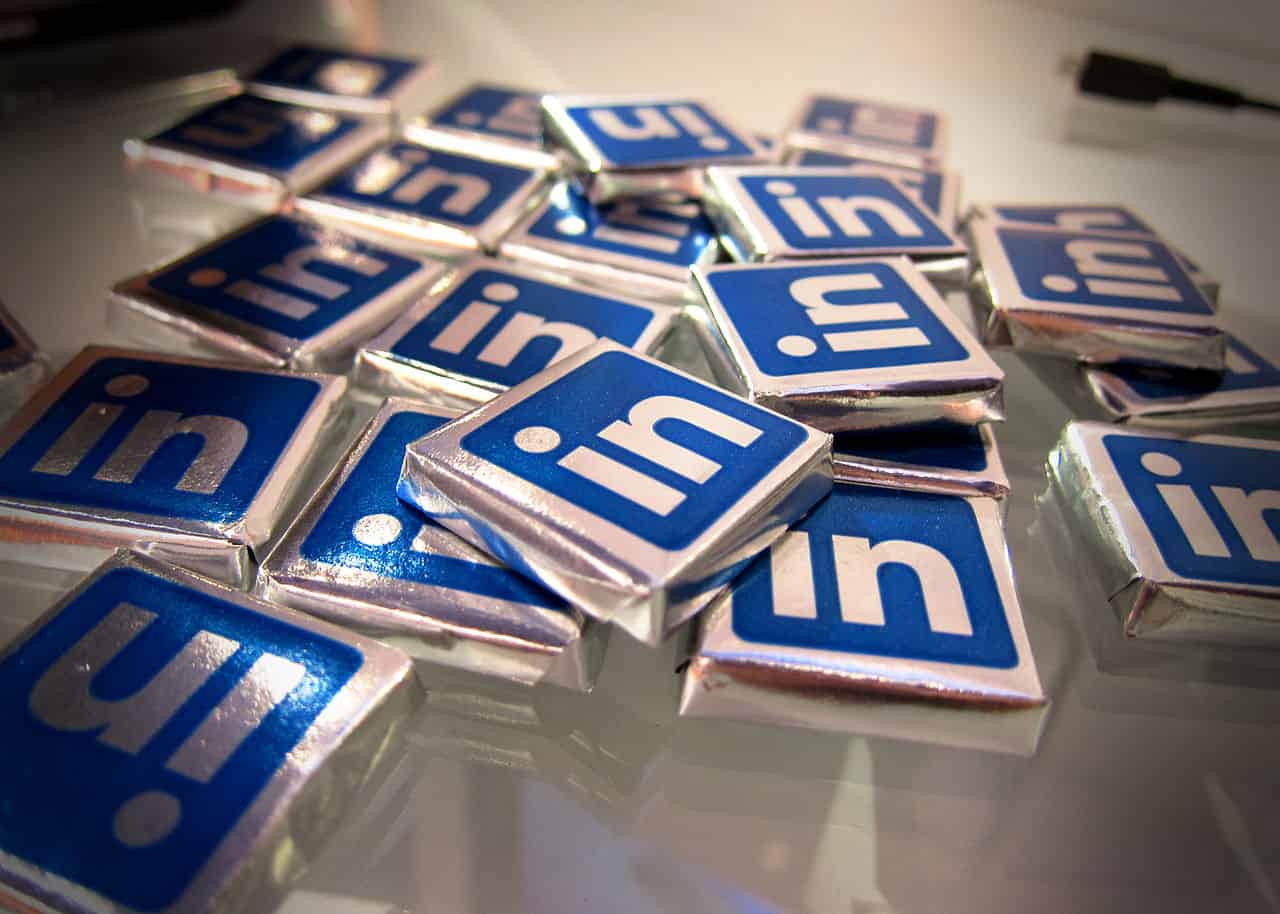
The LinkedIn logo uses a wordmark called Source Sans.
While the Source San font has numerous weights, LinkedIn often opts for the light or semi-bold versions. This also functions as the company’s official fonts for any published material. For longer texts, LinkedIn uses Source Serif or Source Code types.
LinkedIn’s corporate palate consists of 3 colors.
One of them is the core of the brand identity known as LinkedIn Blue, while the other two elements are black and white. Moreover, the psychological symbolism of the color blue involves virtues like authority, intellect, power. All of these elements come together to represent LinkedIn’s brand identity.
Some of the LinkedIn creators were top PayPal managers.
This explains the particular shade of blue used by the brand that is closely reminiscent of PayPal’s own blue. Also, people tend to unconsciously associate the color with networking and communication via the Internet.
The LinkedIn stock once traded on the NYSE under the ticker symbol LNKD.
However, the New York Stock Exchange notified the Securities and Exchange Commission of its intent to delist LinkedIn in December 2016. As a result, NYSE removed LinkedIn’s Class A common stock from listing and registration on the exchange.
The removal of LinkedIn stock followed Microsoft Corporation’s acquisition of LinkedIn Corporation.
When it became effective in December 2016, each share of Class A common LinkedIn stock was converted into $196.00 in cash. This amount was exclusive of interest and subject to any applicable withholding taxes.
Users can reach LinkedIn customer service by going to the LinkedIn Help Center.
This is also the place to go for guide resources, troubleshooting tips, and useful information to help maximize the company’s offerings. By typing relevant keywords in the search bar or browsing topics along the left rail of the page, users can search for answers to specific queries as well.
To qualify for a LinkedIn internship, applicants must have an education program to return to.
Still, LinkedIn opportunities are also open for student veterans. Tech internships are available in late August, while Business internships do not open until late October to early November.
Interns enjoy LinkedIn careers under assigned managers and mentors.
These people serve as mentors throughout successful candidates’ internships. As they provide consistent feedback and professional coaching, they become a key part of a LinkedIn internship experience. LinkedIn interns even gain the opportunity to work side by side with some of the brightest minds in the tech industry.
LinkedIn internships provide many benefits.
The list includes free food and beverages in the office, social and professional development activities, and gym and fitness classes. Aside from that, there are also paid company holidays and relocation benefits for LinkedIn interns. How’s that for LinkedIn facts?
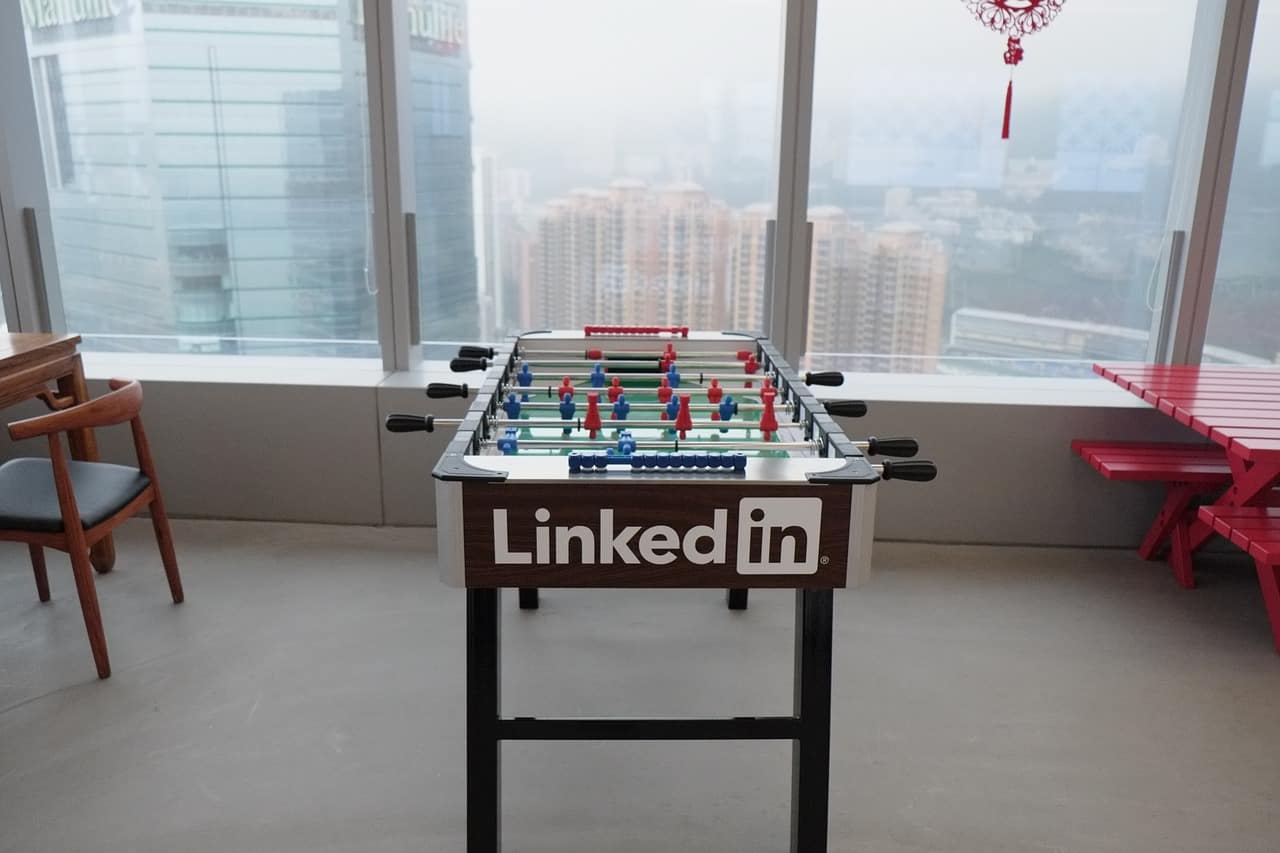
LinkedIn interns do not work in offices all the time.
Some of their activities include professional and social events. Also, there are several opportunities to meet interns and employees from across the company. Aside from learning from the speaker series with company executives, LinkedIn also offers activities to explore new environments.
The average LinkedIn salary is at $122,884 a year.
However, the LinkedIn salary of an employee can range from an average of $72,264 to $167,027 a year.
Users can contact LinkedIn by scrolling to the bottom of the LinkedIn Help Center homepage.
By clicking the Chat with Us link, they can chat directly with LinkedIn Customer Service from the LinkedIn Help Center.
Premium members are the only ones who can contact LinkedIn for now.
This feature is being gradually rolled out as the platform aims to provide LinkedIn Premium members with personalized support. Still, the Chat with us option displays its online or offline status depending on the availability of the service.
Words to avoid on your LinkedIn profile are: “creative,” “motivated,” and “passionate."
Words can make or break your LinkedIn profile, and these particular terms might just keep you from your dream job. LinkedIn Senior Director of Corporate Communications Catherine Fisher revealed that these words are top 3 of the most overused and ineffectual adjectives in profiles.
Further, she advised LinkedIn users to show stronger motivation by offering specifics on projects or jobs that they are passionate about.
The U.S. is LinkedIn’s biggest market with 167 million users.
Still, 70% of LinkedIn users are outside the U.S. This number includes roughly 211 million users in Europe and 179 million users in the Asia Pacific.
LinkedIn ranks 5th in the most popular social media platform for Americans.
This also means that the professional networking site is more popular than Twitter, Snapchat, or Whatsapp. LinkedIn statistics also show that 27% of Americans use LinkedIn, 2% more of the 25% figure in 2018. Definitely one of the LinkedIn facts that show its impact across platforms.
LinkedIn is most popular among college students.
A 2018 study once showed that 50% of college graduates in the U.S. are LinkedIn users. Meanwhile, only 9% of LinkedIn users don’t have an educational attainment beyond high school.
LinkedIn ranks 3rd most-used networking platform for college-educated Americans.
This placed the site over Instagram and Pinterest. This statistic also goes the same for U.S.-residents who make more than $75,000 annually.
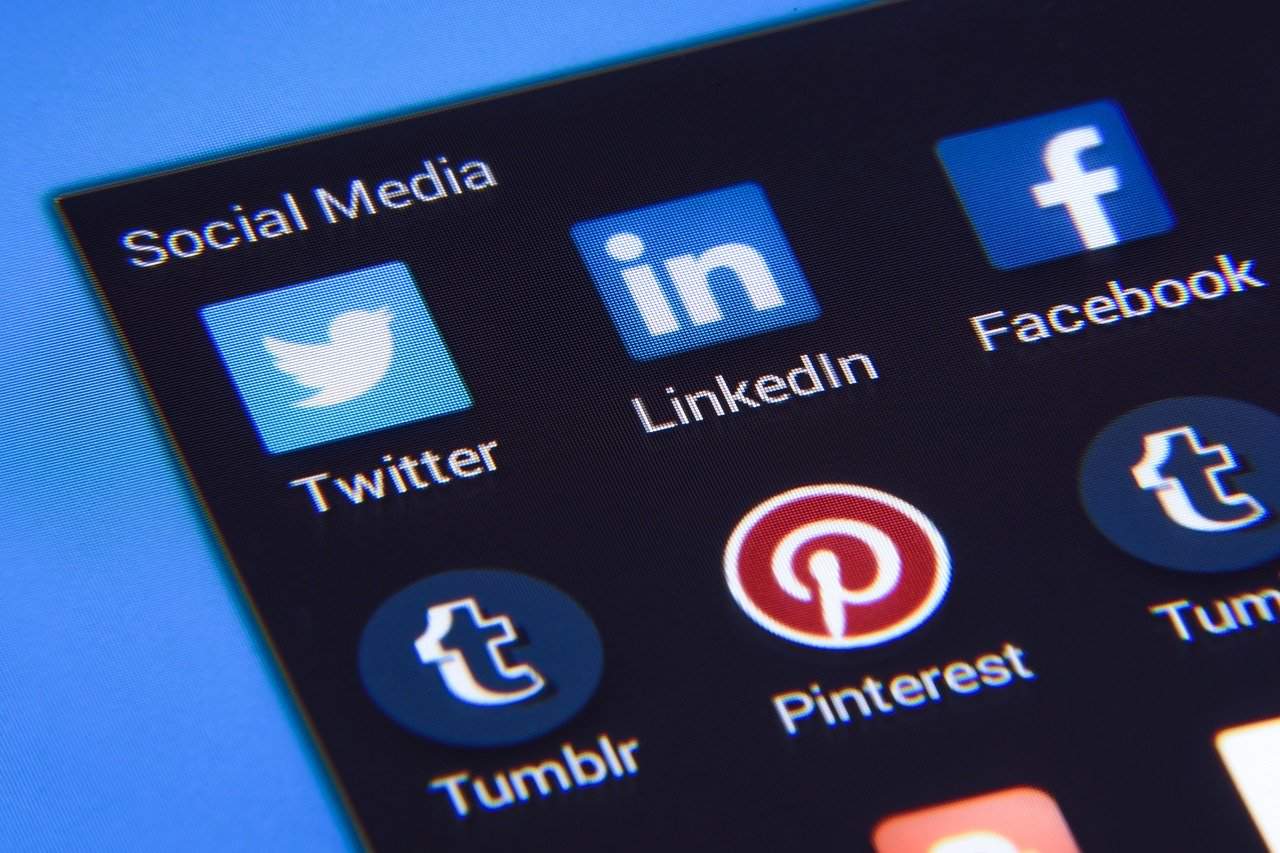
The majority of LinkedIn users at 61% are 25-34 years old.
As it is a professional network, LinkedIn is indeed less popular among the youngest and oldest age categories. Retirees and students are generally off of the target market.
Around 44% of the American population aged 25-29 have LinkedIn accounts.
It can be considered as the ‘Gen Z’s’ first steps into the workforce, saying a lot about the platform’s growth in the coming years.
Over 122 million users have secured interviews through LinkedIn.
Moreover, around 35.5 million users got a job through LinkedIn connections.
About 44% of LinkedIn users make $75,000 annually.
This amount sits above the national median in the U.S.
For 52% of buyers, LinkedIn is the most influential channel in their research process.
Around 42% of buyers chose blogs as the biggest influence on their market research.
Around 90 million LinkedIn users are senior-level influencers.
This is equivalent to 15% of the total number of LinkedIn users worldwide. Meanwhile, mass affluent users make up only around 40 million users, opinion leaders are at 17 million, and C-level executives are at 10 million.
About 57% of LinkedIn traffic originates from mobile devices.
This follows the trend of how the majority of users surf the internet on mobile devices. Still, it is hard to miss that this figure is relatively low compared to Facebook’s 88% and YouTube’s 70%.
About 80% of LinkedIn users either want to have a mentor or be one.
Either way, they can make quality connections on LinkedIn when they try out LinkedIn’s Career Advice feature. Not only would it connect mentors and mentees, but it also bases its results on whether a user is in the advice-giving or advice-getting stage.

LinkedIn users can connect directly with up to 30,000 people on the platform.
LinkedIn statistics show that 70% of members were hired at a company where they had connections. This further proves the saying that “It’s not what you know, but who you know that makes the difference.”
Among B2B marketers, LinkedIn ranks as the second-most popular social media site.
This places LinkedIn second only to Facebook. Moreover, 4 out of 5 B2B marketers use LinkedIn. To compare, 91% of B2B marketers use Facebook.
Only 14% of marketers chose LinkedIn as their business’ most important platform.
This figure is a huge drop from the 61% who chose Facebook. Still, LinkedIn marketing activities may be on the rise with 70% of B2B marketers planning to increase their organic engagements on the platform.
Around 94% of B2B marketers use LinkedIn for content marketing.
Furthermore, users claim LinkedIn thrice as trustworthy than other social platforms for delivering worthwhile content. LinkedIn also turns out to be the go-to site for earning more eyeballs on video and text content informing people and helping the target audience.
Over 89% of B2B marketers use LinkedIn for lead generation.
Not only that, but 62% of the same group claims LinkedIn is a successful lead generation tool. This figure is twice as many as the next social platform.
4 out of 5 LinkedIn users impact business decisions.
As the LinkedIn chief said, the platform’s selling point for marketers is LinkedIn’s ability to target an audience for each job.
Users tend to engage with coworkers 60% more than with other connections.
LinkedIn engagements include likes, comments, and shares, and messages. Moreover, the professional networking site launched its Teammates feature in 2019, which users can use to identify and keep up with their current colleagues.
Employees make up 30% of the engagement of a company on LinkedIn.
Being a part of their respective organization, employees are crucial for brands to succeed. Employee advocacy is also a winning strategy for boosting brand reputation among companies that have a comprehensive program.

Employees tend to share their employers’ content 14 times more than other content types.
Statistics show that a company’s employees have 10 times more reach across all social network sites on average compared to the company’s official profiles. Also, it could come off as an employee’s way express pride for their work.
People take information from a regular employee as more trustworthy.
At a 53% rate, people value employee feedback more than information from the CEO which only garnered a 47% rate. Hence, this has the most impact on job hunters browsing for opportunities on the platform.
LinkedIn carries 15 times more content impressions than job postings.
From simply being a recruitment platform, LinkedIn has transitioned into being a professional network. People can visit the site for resources and information, making LinkedIn a valuable platform for content marketers, especially in B2B.
Only about 3 million LinkedIn users share content on a weekly basis.
Meanwhile, content on the platform’s feed receives around 9 billion impressions weekly. This shows that only 1% of LinkedIn’s 260 million monthly users share posts while 3 million or more users net the 9 billion impressions.
Over 50% of social traffic to B2B sites come from LinkedIn.
Hence, the platform is also perceived as the most credible source of content. Also, 98% of content marketers utilize LinkedIn for content marketing, mostly in B2B marketing and lead generation.
“How-to” and list posts with 40-49-character titles perform best on LinkedIn.
This figure resulted from a study that analyzed over 3,000 LinkedIn posts. Aside from that, posts with 5 headings turn out to have the most views. Long-form content with 1,900-2,000 words or posts with 8 images shows the best performance as well.
Including photos to a post increases the comment rate by 98%.
LinkedIn is not immune to this visual content strategy which proposes that photos improve a post’s engagements.
A LinkedIn login only requires an email address and a password.
Take note to sign in from LinkedIn.com instead of clicking the Join Now box, as it might create a duplicate account. Users only need to enter their LinkedIn login details at the top of the page and then click the Sign-In box.
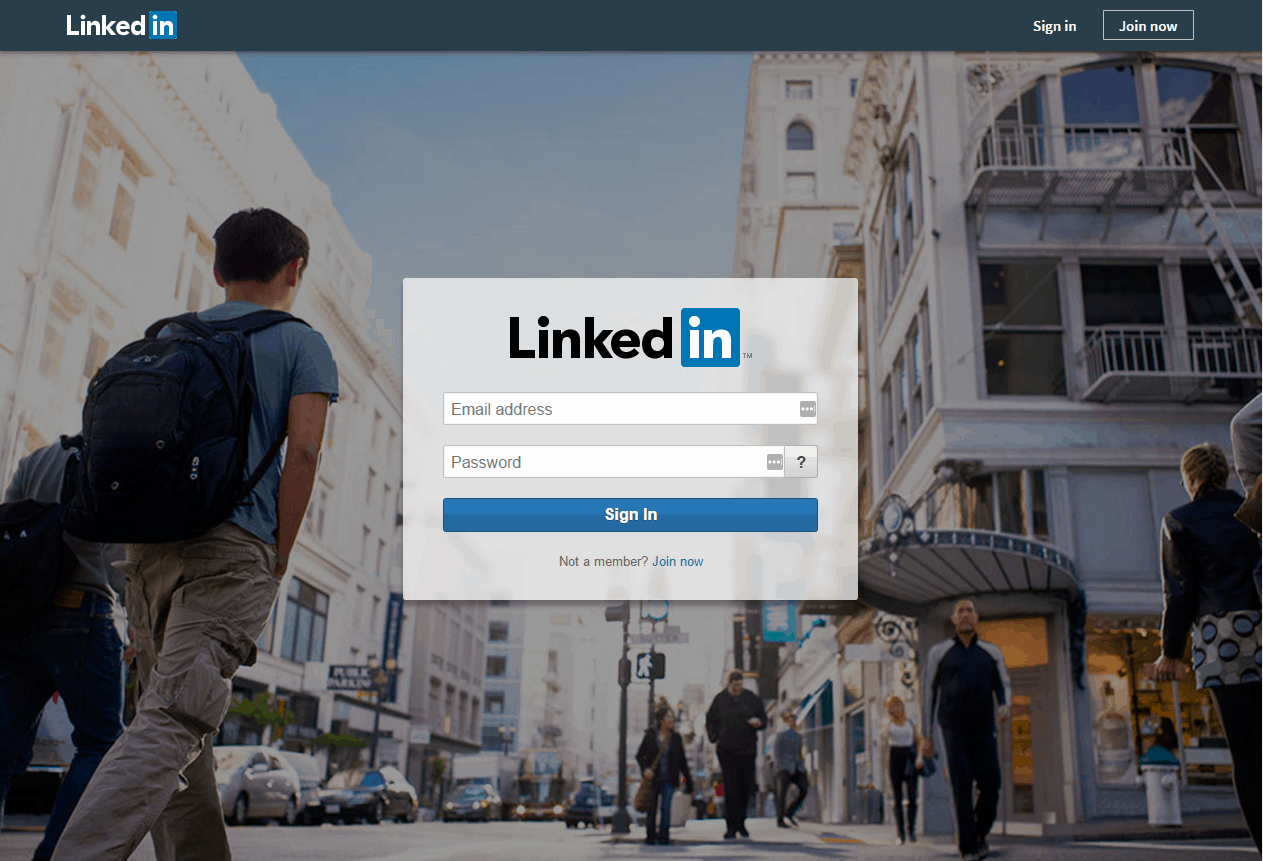
Having a LinkedIn profile picture can get a user up to 21 times more profile views.
Since first impressions are everything when it comes to careers, it’s important to have a proper display picture for your LinkedIn profile. In other words, users can immediately improve their professional image with a LinkedIn profile picture alongside details on background photos and visibility settings.
A LinkedIn headline lets users describe what they do in 120 characters or less.
At the top of a user’s profile, the LinkedIn headline bears the user’s brief description next to their name in search results. This description must entice potential employers or colleagues to click a user’s profile and learn more about their experience and background.
Recruiters are 33 times more likely to contact members with 5 or more listed skills.
These same people are also contacted more by other LinkedIn members and receive up to 17 times more profile views. Hence, filling out the skills section of a profile is an essential strategy on the platform.
LinkedIn users can upload a header image on their profile called the LinkedIn banner.
Similar to Facebook’s cover photo, this part of a LinkedIn profile allows users to increase their branding and visibility. It is another section where users can uniquely express who they are and attract like-minded followers and connections.
LinkedIn boasts of the LinkedIn Résumé Builder.
The LinkedIn Résumé Builder assists premium members in creating a professional résumé quickly. It uses existing data on the user’s profile and the output can later be downloaded as a PDF.
LinkedIn Résumé Builder is currently only available to LinkedIn Premium Career subscribers.
Still, there are future plans of gradually rolling out the said feature to all the other members.
In 2013, LinkedIn was involved in a class-action lawsuit.
Members once discovered how the platform used their imported email contact list to send out invitations to join the site using the original LinkedIn user’s name. While it was found that the site had not overstepped its Terms of Service policy with the initial introductory email, LinkedIn took advantage by sending two follow-up emails. Despite denying the wrongdoing, LinkedIn agreed to a $13 million settlement.
Microsoft’s LinkedIn acquisition was followed by the introduction of several new features.
When Microsoft acquired LinkedIn, it introduced the Showcase pages which function as extensions of business pages. These are designed to highlight the company’s business unit or initiative.
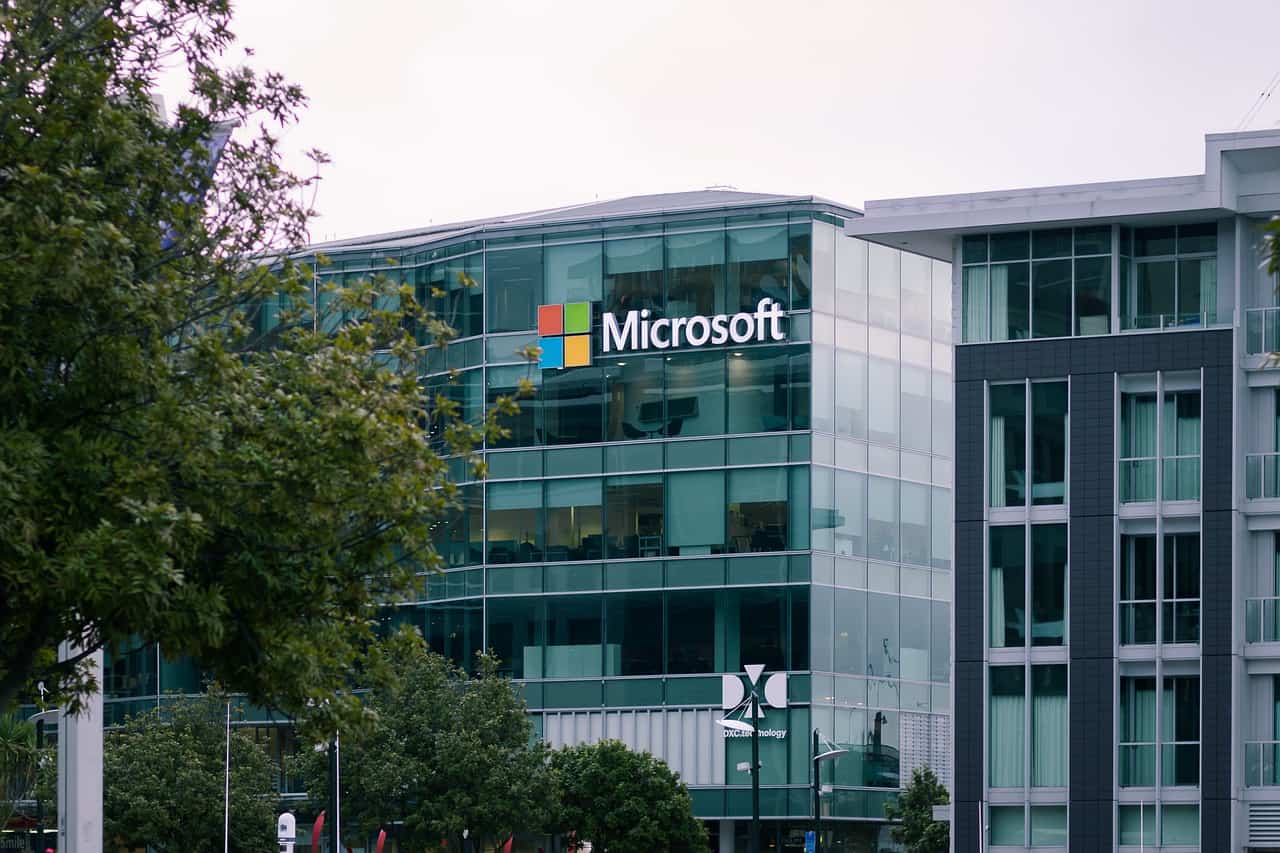
LinkedIn introduced its own Calendar Chatbot.
This feature syncs the calendar of two different LinkedIn to smoothly process a meetup. More importantly, the calendar chatbot helps connect people from different time zones.
Other AI technology has already reached LinkedIn before the Chatbot.
LinkedIn’s integration of AI includes features like the smart replies or suggested responses, both saving users time and effort for such activities.
Before, video content on LinkedIn can only be embedded from other sources.
Eventually, the platform allowed users to upload native videos through the mobile app. Aside from giving users the more “human” side of businesses, this move also made brands more approachable.
Around 28% of marketers consider LinkedIn video as the most effective platforms for marketing.
While this figure is not that big, it is still worth noting that LinkedIn video was only made available to users in August 2017.
LinkedIn made native video ads a part of sponsored content offerings.
Alongside the launched video filters, these features enable businesses to share their own video content. This marked a leap from when video content was only available for individual member user accounts.
Data shows that LinkedIn users spend time watching videos than viewing static content.
Following the beta launch of LinkedIn’s Sponsored Content, the company found that users are 3 times more likely to watch videos than view static content. Even during the beta release of LinkedIn Video, videos appear to be shared 20 times more than any other content type.
LinkedIn’s Recruiter is a site portal for headhunters working to fill jobs.
Recruiters who pay for the premium service get to surf profiles anonymously. Moreover, they can also stick a dossier with personal notes to a profile and generally peer in on unsuspecting users.
Some recruiters view the lack of a LinkedIn profile as a “red flag.”
As reports said, people who lack a LinkedIn profile can have little to no chances of getting hired despite recruiters coming across them through another channel.
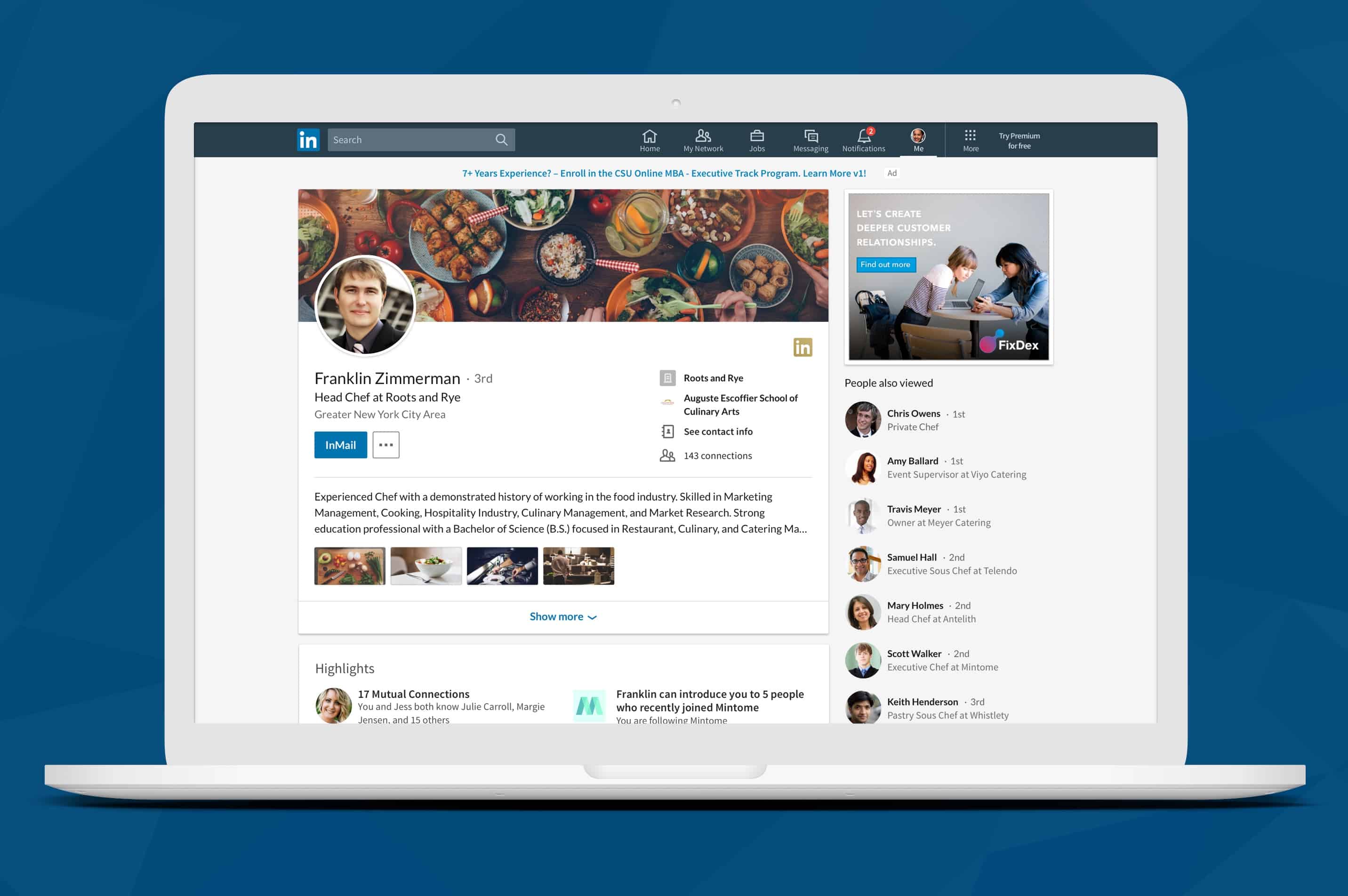
LinkedIn offers 3 particular product lines.
This list includes Marketing Solutions, Premium Subscriptions, and, lastly, Talent Solutions which involves Hiring, and Learning and Development.
LinkedIn Learning began in September 2016.
As an online learning platform, LinkedIn Learning enables individuals and organizations alike to achieve their objectives. It also helps people discover and develop needed skills through a personalized and data-driven learning experience.
LinkedIn Learning combines in-store data and network with content from Lynda.com.
Moreover, LinkedIn’s library boasts of over 9,000 digital courses taught by various industry experts. It covers a wide array of topics on business, creatives, and technical niches, from leadership ‘soft skills’ to designing to programming ‘hard skills.’
Membership is generally free except for when users opt for LinkedIn Premium.
By paying for a LinkedIn Premium account, users can view more profiles in their search results and see full profiles of any other LinkedIn user.
LinkedIn sells products through 2 main channels: offline field sales, and online self-serve channels.
The offline field sales organization engages with both large and small enterprise customers. Meanwhile, the online channel includes enterprise customers and individual members purchasing subscriptions.
LinkedIn Members Solutions has Free Solutions and Monetized Solutions.
LinkedIn’s Monetized Solutions includes Stay Connected and Informed, as well as Advance My Career features. Meanwhile, the Free Solutions involves Marketing Solutions, Premium Subscriptions, as well as Talent Solutions, which spans Hiring, and Learning and Development.
LinkedIn Premium has 4 price tiers.
Users can get the Premium Career for the lowest cost at $29.99/month, followed by Premium Business which is at $59.99/month. Other options are Sales Navigator Pro at $79.99/month and Recruiter Lite for Hiring at $119.95/month. However, these rates may be subject to change from time to time.
LinkedIn Premium Career is ideal for people who use the platform for job hunting.
The package includes access to five InMail messages per month and in-demand video content. Moreover, a LinkedIn Premium Career subscription enables users to see who viewed their profile. They can see how many searches they have appeared in, and additional information like salary on job postings as well.
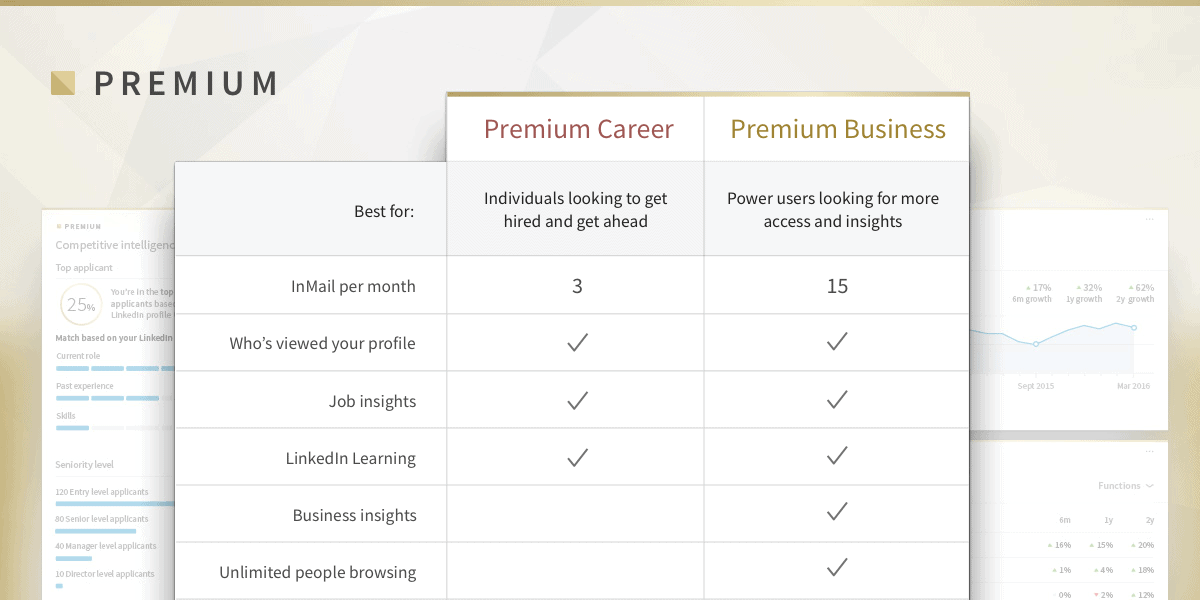
LinkedIn Premium Business provides access to additional business resources.
Aside from this, the company also gets access to unlimited people searches. Meanwhile, advanced search filters, sales tools access, and the ability to make notes on user profiles are perks of the Sales Navigator Pro account. The Recruiter Lite gives subscribers guided search smart suggestions and more recruiter-focused tools.
Users can search for people, jobs, posts, and companies in the LinkedIn Search Bar.
There are also search suggestions available which appear in the dropdown list as a user types.
The new LinkedIn Search is divided into two areas.
Connections, Current companies, and Locations are the most frequently used search filters on LinkedIn. Hence, they are at the top of the search page. The rest of the additional search filters for people and jobs are found at the All filters section.
LinkedIn advertising pioneered a new era in B2B advertising.
LinkedIn advertising has the edge of connecting with audience members who are happy to engage when in their business mindset. Unlike when on social network sites like Facebook, the same people might be inclined to keep scrolling past similar ads on their recreational feeds.
LinkedIn Ads benefit B2C companies as well.
This also includes nonprofits, universities, and most other types of organizations. LinkedIn ads for such organizations can aid in the success of causes such as finding the right applicant for a specific job opening.
LinkedIn Ads are sold by auction.
Marketers bid against other advertisers who are trying to reach the same audience. They can choose from CPC or CPM pricing, or Message Ads where they only pay when the message is delivered. Once they have set their own budget, bid, and schedule, they can start and stop their ads at any time. Definitely one of the LinkedIn facts to watch out for.
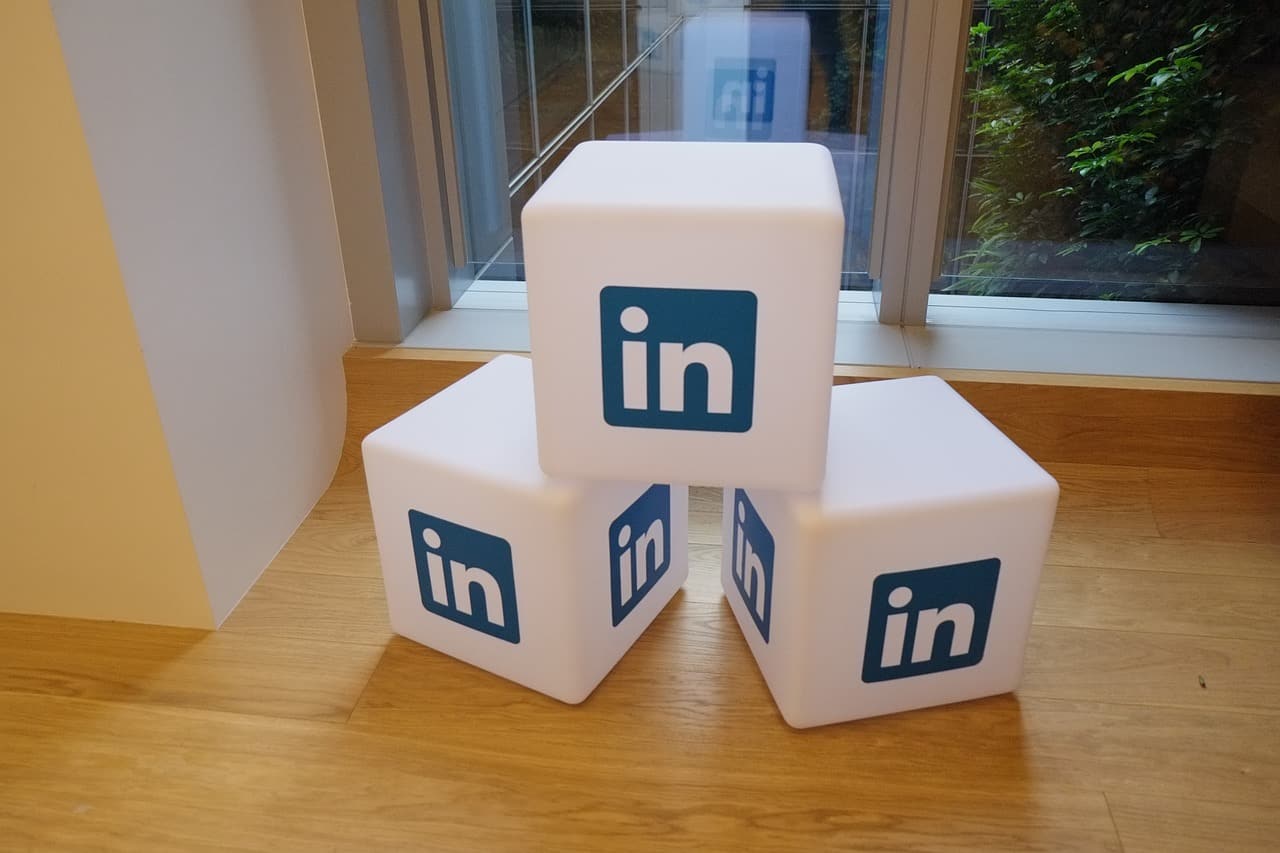
The largest group of LinkedIn Advertising audiences come from the U.S.
With a reach of 160 million users, the U.S. also yields the most potential ads reach. The U.S. is 2.5 times as powerful as India, which is in second place with 62 million users. Meanwhile, China is in third place with 50 million users.
LinkedIn has an ad management tool called LinkedIn Campaign Manager.
This tool empowers even the regular members to create, launch, and evaluate the performance of a LinkedIn Ad Campaign. As a self-service online tool, the LinkedIn Campaign Manager guides advertisers in launching campaigns. With the platform’s flexibility in 23 languages, thus reaching the world’s largest professional network.
LinkedIn has a Chrome plugin and desktop application called LinkedIn Helper.
The LinkedIn Helper can be used to automate different functions of the site like sending connection invites and sending messages to 1st connections. Other applicable actions are creating autoresponder messages and inviting 1st connections to join a group.
Users can collect LinkedIn saved jobs by clicking the Save button on the job details page.
Likewise, they can unsave saved jobs in LinkedIn by clicking the Cancel icon to the right of the job title.
LinkedIn has a professional services marketplace called LinkedIn ProFinder.
This feature helps people find suitable freelance or independent professionals in their respective areas. However, the LinkedIn ProFinder is currently only available within the U.S. for specific categories.
A LinkedIn recommendation refers to a written statement by a member to commend a connection.
This recognition statement can be exchanged among students, colleagues, and business partners.
Users can request a LinkedIn Recommendation from 1st-degree connections.
The mentioned LinkedIn facts can only be helpful when done with credible people who truly value the user’s work, services, or products. Hence, it is better to have LinkedIn Recommendations from co-workers, colleagues, managers, clients, and customers, above other connections.
LinkedIn members prefer working with people with recommendations.
This explains the importance of a LinkedIn Recommendation to hiring managers. Even people seeking new business partners and customers rely on it, too. The user receives a message notification from the sender on LinkedIn when a connection writes them a recommendation.
An accepted LinkedIn Recommendation displays in the user’s network by default.
Still, users can choose whether to display these recommendations or not. It is helpful in case the user wishes to select particular updates to be sent for each new recommendation displayed.
They can choose to hide a recommendation they have accepted before or request a revision directly from the connection if they are unsatisfied with the content.
Job hunters trust a LinkedIn Recommendation rather than a LinkedIn Endorsement.
For them, an ‘Endorsement’ can be easily ticked off and might not be accurate especially in the eyes of strangers or acquaintances. On the other hand, LinkedIn Recommendations appear as personalized endorsement letters that other sources can post to a profile.
There are many ways to upload a résumé to LinkedIn.
The most simple of these is by displaying it on the profile. Another method is creating a résumé and uploading it to LinkedIn via Settings for future job applications. Uploading the résumé during the job application process is possible as well. Also, the user can upload a résumé to LinkedIn by sharing it with their network.
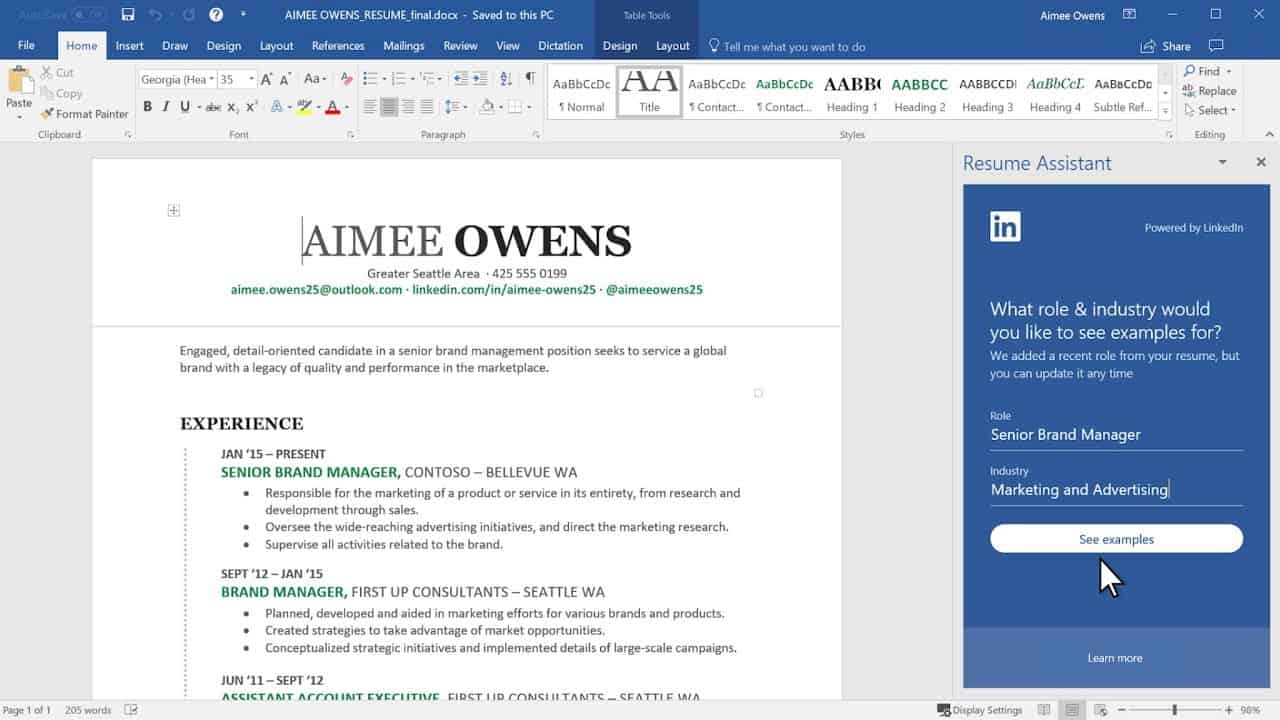
Users can block someone on LinkedIn by using either a mobile device or a desktop computer.
A blocked LinkedIn member would then appear on the user’s blocked list. Still, blocked users would not receive any notification of the said action.
LinkedIn can reveal that certain users receive notifications of being blocked.
This applies to instances where the user is blocking a member that was previously or is currently sharing a LinkedIn Recruiter account with. Hence, LinkedIn reserves the right to notify the blocked member of the action.
Users can block someone on LinkedIn by navigating the target account’s profile.
Upon visiting a user’s profile, simply click the More button below the member’s profile picture. Then, select Report/Block from the dropdown list, then select Block [member name] from the What do you want to do? pop-up menu. Finally, click Block to proceed or Go back to review your options.
It's necessary to update a LinkedIn Page URL or webpage FROM TIME TO TIME.
Even minor changes on a page’s name such as removing/adding a dash, ‘Inc.,’ and others call for an update to the page’s URL. For assigned Page admins, they can generate an updated LinkedIn URL from the page’s admin center.
To change a LinkedIn URL, the user must click the Admin tools dropdown on the Page admin center.
Then, select the Public URL to enter the desired URL change. Next, click Save Changes, with a success prompt appearing in the bottom left corner. In case of the absence of the Public URL option in the dropdown, the user must reach out to LinkedIn customer service.
Closing an account is equivalent to a permanently deleted LinkedIn account.
Such actions remove any access to all LinkedIn information that the user has on the site. For Premium account users, they can cancel their Premium access and still keep their free Basic account. This way, they can retain their LinkedIn information such as their profile and connections.
Users can delete their LinkedIn account from the Settings & Privacy page.
To delete a LinkedIn profile, a user must click the Me icon at the top of their LinkedIn homepage, then select Settings & Privacy from the dropdown. Next, click Change next to Closing your LinkedIn account under the Account management section of the Account tab. It is required to tick the reason for closing the account. Finally, click Next, enter the account password, and click Close account to fully delete your LinkedIn account.
LinkedIn members can reopen a deleted account within 20 days.
However, the professional social network site would not be able to recover some information despite reopening an account. Some of the said unrecoverable information includes Followings (influencers, companies, brands), Ignored or Pending invitations, Endorsements and Recommendations, and Group Memberships.
Definitely one of the LinkedIn facts that users should consider before deleting their account.
Was this page helpful?
Our commitment to delivering trustworthy and engaging content is at the heart of what we do. Each fact on our site is contributed by real users like you, bringing a wealth of diverse insights and information. To ensure the highest standards of accuracy and reliability, our dedicated editors meticulously review each submission. This process guarantees that the facts we share are not only fascinating but also credible. Trust in our commitment to quality and authenticity as you explore and learn with us.


